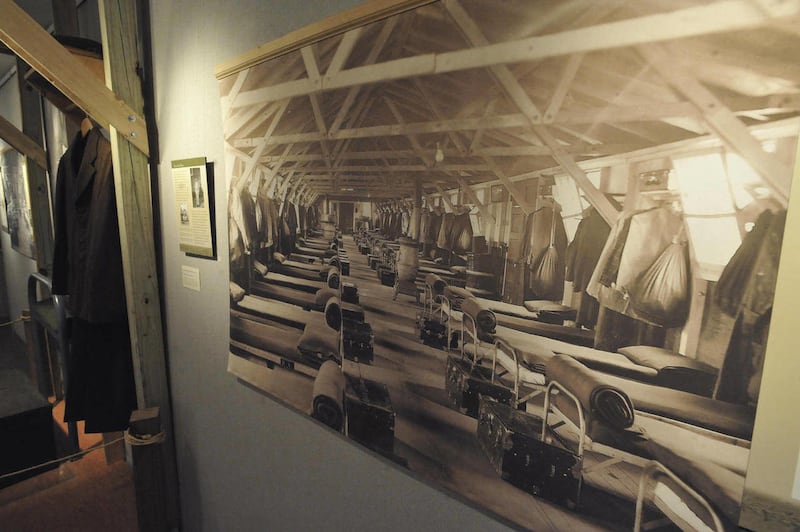LERNA, Ill. — Lincoln Log Cabin State Historic Site's most famous connection to the past is as the home of the father of the 16th president, but some think the group of workers that largely made the site what it is today deserves recognition.
Research into the role of the Civilian Conservation Corps to turn what was farm ground more than 70 years ago into the site honoring the life of Thomas Lincoln and his contemporaries was a cornerstone of last year's 75th anniversary observance at the site.
Now, that research and more will be part of a nomination to have the site placed on the National Register of Historic Places. The work by the CCC, one of the New Deal's work programs during the Great Depression, is historically significant in its own right, the nomination's backers say.
"The work the CCC itself did is now historical in nature," said Matthew Mittelstaedt, manager of the historic site.
Steve Thompson, a historic preservation consultant helping with the nomination, said the national register started 46 years ago as a way to make sure highway projects and other work didn't disturb sites with a strong connection to the past. While there's no such threat to Lincoln Log Cabin, there are still benefits of having the site on the register, he said.
Thompson said a national register designation would mean that the site will be added to the National Park Service's tourism system to which some people might refer to help decide on travel destinations. It could mean an increase in out-of-state visitors to the site, he said.
Mittelstaedt said the register would also be "a nice validation" for the CCC workers. Lori Henderson, president of the Lincoln-Sargent Farm Foundation, which raises money for programs at the site, said the same would be true for anyone who's supported the site over the years.
"It's a level of prestige that carries some weight with funders," Henderson added, explaining that the designation could be a helpful part of grant applications.
Coles County actually had two CCC workers camps during the 1930s. One was in Charleston and Henderson noted that its location is currently the site of housing so there's not as much of a chance to learn from it.
After the state purchased the farm land that Thomas Lincoln once owned, the CCC workers turned the site into much of what's there now. While doing the work, they lived in a camp that was located at the northwest corner of the site, near its main entrance.
In conjunction with the national register designation, the site's also considering developing the camp location with pathways and interactive areas that will let visitors learn more about that part of its history.
Recognizing the CCC work through the national register and at the site won't take away from its focus on Lincoln history, Mittelstaedt said. About a third of a mile separates the camp site from the Lincoln cabin, so visitors can see two parts of the site's history separately, he said.
"It's not a conflicting story," Mittelstaedt said. "The CCC adds another layer and component of that."
Last fall, much of the invasive vegetation was cleared from where the camp was located so archeological work could take place in the spring. The site received a grant from the Lumpkin Family Foundation to hire Chris Stratton of Fever River Research in Springfield to help with that part of the project.
"We found a lot of stuff to do with construction," Thompson said, mostly nails and wires but also the remnants of a wooden utility pole. Those items could eventually return to the site as part of an exhibit, he said.
First, Fever River will complete its report on the archeological study and make a recommendation on national register eligibility. The nomination also needs review at different agencies at the state level, concluding with a presentation to the Illinois Historic Sites Advisory Council, likely in February.
It will then go to the National Park Service with a decision likely by June, and the backers all said they're optimistic about the site's chances to be added to the registry.
Eastern Illinois University students are helping with the project in several ways. Historic administration students are working on the nomination and one of them will make the presentation to the state council, and biology students are working on a land management plan for the CCC camp location.
"It's another way of collaborating with the community," Mittelstaedt said.
Online: http://bit.ly/TL8O8U
Information from: Mattoon Journal-Gazette, http://www.jg-tc.com



